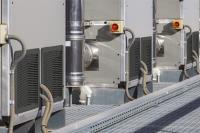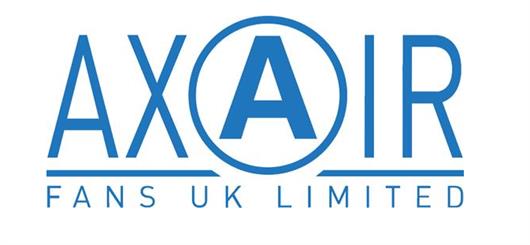 Add My Company
Add My Company
Sign In
Cabinet Cooling For Outdoor Enclosures
21-11-2022

Cabinet cooling for outdoor enclosures seems simple, but it’s often little things that are overlooked that can reduce the means of having a well maintained and effective electrical cabinet. This not only improves the performance of the unit but also prevents the unnecessary failure of valuable electrical components inside the cabinet.
There are 2 types of enclosure cooling, through natural convection or forced convection. In natural ventilation heat from the unit rises and then dissipates out of the vents in the top of the unit. Although this option is more cost effective, it is a lot less controllable and cabinets have more potential to overheat causing the electrical equipment to fail.
Forced Ventilation. Using forced ventilation, the user can monitor and control every aspect of the outdoor enclosure. It works by pulling cold air in and expelling hot air out. Although there are different ways of doing this the concept remains the same. Being able to control the temperature is essential in an outdoor enclosure as the enclosure is faced with the elements along with potentially large changes of temperature.
One of the main tasks in setting up an outdoor enclosure is working out the air flow.
Your first option to work this out is by using CFD (Computational Fluid Dynamic) analysis software. Given the input of variables, the software uses algorithms to calculate the interaction of gases and liquids and provides a visual representation of these airflows for analysis. CFD is arguably the most convenient and easy way to establish the enclosures necessary airflow however it is expensive and requires technical expertise to use the program.
The second method is to calculate it manually - The necessary equations can be found online and in engineering journals. When using calculations, be aware of factors that could skew the results. An example of this would be altitude. Be sure to consider all the factors in your calculations Getting this wrong could mean a reduced effectiveness in products or even malfunction or failure. All possible outcomes result in additional costs.
Another important thing to consider is selecting the most suitable electronic cooling fan. For low pressure, high airflow the most commonly used fan for electronic cooling is an axial fan (or compact axial fan). For high pressure, low airflow a centrifugal fan works best. Many users are increasingly opting for a hybrid of the two, especially in the industrial market. The intake is axial while the exhaust is diagonal, resulting in a fan that can be used at higher pressures whilst still delivering high airflow.
Heat can be an enclosures worst enemy. All manufacturers will provide a recommended maximum operating temperature however it is strongly advised to keep the temperature slightly under the recommended amount. Electrical batteries have a threshold of 30°C whereas power supplies, speed drives and contractors have a higher threshold of 40° to 50°.Solar radiation is often the main cause of overheating in outdoor enclosures.
The heating effect of the sun on an enclosure significantly increases an enclosures temperature. When the external ambient air is hotter than the equipment’s operating temperature, heat transfer will cause an increase in the enclosures internal air temperature. Other heat transfer from the environment include other equipment in the vicinity such as other enclosures or industrial equipment, like foundry equipment. Additionally the equipment inside often generates large amount of heat making the enclosure overheat if it doesn’t have the correct equipment inside.
The size of the enclosure is also a determining factor of overheating. A large surface area increases the effect of solar radiation but also dissipated heat better than a small one. The first is a deterioration of the equipment’s performance. High temperatures can cause erratic performance leading to detrimental results. Having equipment at such a high temperature excel the aging of the equipment thus shortening its lifespan.
High temperatures can also lead to the unexpected shutdown of equipment. Many manufacturers install a fail-safe into the equipment to prevent damage. This means potentially crucial downtime until it cools down. Finally, after continued exposure to high temperatures, the equipment is likely to be damaged irreparably and completely fail.
One more side effect due to overheating, although unlikely, is the start of a fire. If the equipment overheats to a high temperature a fire could start causing not only property/equipment damage but potentially putting people’s lives at risk.
There are numerous techniques to mitigate effects of solar radiation and reduce the required cooling capacity. The simplest method is by placing the enclosure in a north-south orientation, reducing the total surface area exposed to the sun. Another easy solution is to paint the enclosure in light, reflective colours or in a highly polished stainless steel to reflect the sun’s rays therefore reducing the effects of solar radiation. Another cost-effective method is a sunshade, which would keep sun off the enclosure all day.
Heat is not the only element an outdoor enclosure can face. Colder temperatures can play havoc with an enclosure too. The enclosure could face start-up issues as in low temperatures oil and grease lose their lubricating properties meaning that motors and machinery may not be able to function. Plastics and elastomers can also be deemed unsafe for use in low temperatures.
A common problem with temperature changes is condensation. Insulators lose their properties at low temperature. The combined effect of conductors in contact can cause arcing issues and increase the risk of fire. Condensation however can be combatted with a relatively inexpensive anti-condensation heater. A thermostat can also help to combat condensation by monitoring the temperature to ensure it remains constant diminishing the risk of condensation.
In extreme cases Ice can form on the equipment casing increasing the risk of short circuiting and breakdown of electrical circuitry. Humidity can also come in to play depending on the environment. Manufacturers do state the maximum humidity level for their equipment. Should the humidity level surpass the recommended amount the equipment can age prematurely by forcing the equipment to work harder and shortening its lifespan.
Humidity can also cause electro-migration and short-circuiting which can lead to components breaking down. Moisture absorption can also occur making the polymers in the insulation lose their properties exposing the equipment to a variety of problems. Finally, possibly the worst side effect of humidity is corrosion. Corroded joints could be irreparable requiring costly replacements.
With an outdoor enclosure constantly facing the elements one thing to make sure is correct is the IP rating of the products. IP rating, also known as ingress protection rating, is key to keeping your components safe. An example of this would be IP55. The first number ranges from x or 0 to 6 and represents the level of protection against solids eg: wire or dust, and the second number which ranges from x or 0 to 8 represents the level of protection against water. The user must assess what IP rating products such as the fan filter must have based on its environment and the components inside.
More often than not outdoor enclosures are usually in remote locations, meaning that the enclosures themselves aren’t checked every day to make sure everything is healthy and functioning. With this in mind a remote enclosure monitoring system can be used. An alarm will be triggered should the equipment malfunction, suffer physical damage or reaches a temperature outside the scope of its efficiency temperature.
Keeping all these things in mind, it is easy to keep an enclosure running at maximum efficiency and as safely as possible even when faced with the elements.
For more information on enclosure ventilation products and cooling accessories visit our online store https://www.axaironline.co.uk/.
For more information on Cabinet Cooling For Outdoor Enclosures talk to Axair Fans UK Ltd
Enquire Now
List your company on FindTheNeedle.

